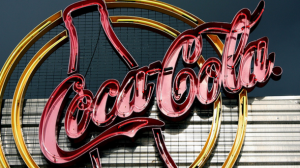Coke CEO ‘not happy’ with weak Q2 2013 performance
The Coca-Cola Company CEO Muhtar Kent says the company is not happy with its Q2 performance and blamed lower volume sales on global economic weaknesses and unusually poor weather.
 Coke reported global growth of 1% in Q2 and 3% in H1 and global volume and value share growth across its still, sparkling and non-alcoholic RTD beverages.
Coke reported global growth of 1% in Q2 and 3% in H1 and global volume and value share growth across its still, sparkling and non-alcoholic RTD beverages.
But volume growth was below expectations due to a confluence of factors that, collectively, made for a challenging quarter.
The firm blamed slow economies in Europe, Asia and Latin America and historically wet and cold weather across multiple regions that hit consumer spending and overall NARTD beverage industry performance.
“While we are not happy with our performance, we did gain global volume and value share in total non-alcoholic ready-to-drink beverages, as well as in sparkling and still beverages in the quarter,” Coke CEO Muhtar Kent said.
North American volumes fall for first time in 12 quarters
Coke posted 9% volume gains in Eurasia & Africa, but European volumes fell 4%, while North American volumes fell 1% and the firm suffered flat volumes in both China and Brazil.
On a later investor call Judy Hong from Goldman Sachs asked Kent what Coke would do to improve volume performance going forward, particularly in markets such as China, where it was not participating in some “fast growth segments”.
PepsiCo’s tie-up with top Chinese beverage player Tingyi was given the green light in March 2012, and created a market-leading JV with an approximate 19% volume share (2011 Euromonitor International data).
Kent cited issues in Latin America (key markets Brazil and Mexico slowing down), Chinese consumer spending well below GDP level, weather issues in India and issues in America leading to a volume dip for Coke for the first time in 12 quarters.
“All of these things we don’t expect to continue at the same time. Therefore, the portfolio will work,” he said.
Chinese market leader in soft drinks, juices
On China specifically, Kent said that the different competitive landscape was not the principal issue.
“The main issue for us is to ensure that we can continue to distribute in outlying areas of China where we feel we have had some issues, and we are correcting those,” he told Hong.
Coke also needed to ensure its that marketing worked, and that its innovation pipeline and packaging served consumer needs, Kent added.
As the Chinese market leader in sparkling soft drinks and juices, Coke continued to grow in these categories, he said.
“And we feel confident that playing in those two categories, but also innovating across others like dairy, is going to create growth and value for us starting in Q2 but also continuing,” he added.


































